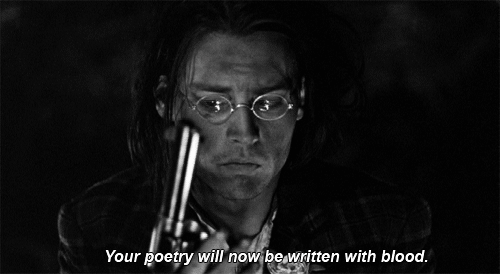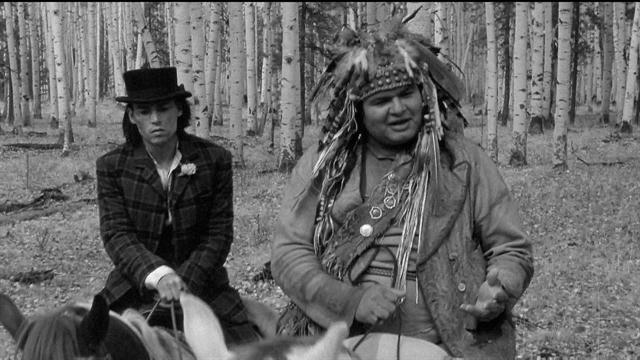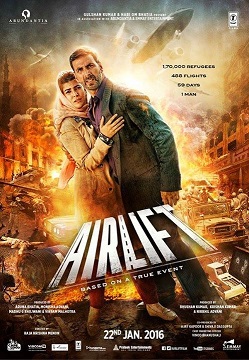My Life in Movies:
The first movie I remember watching in the theater was Disney’s “Beauty and the Beast.”
I think my brother and his friend Elizabeth took me to see it; I was 5 years old at the time. It was 1991 in Seattle, Wash. and grunge was blowing up. My older brother was soon to be obsessed with Alice in Chains and Nirvana, but for me and my 5-year-old mind, that first-remembered movie theater experience opened up a world of fantasy and terror that would consume my imagination for some time to come. Perhaps that first big screen movie influenced me in more ways than I thought; I became a bookworm, pouring over fantasy stories, much like the main character, Belle. Now that I am older I see dark undertones throughout this film. Themes of domestic abuse were implanted in my young mind that could perhaps later convince me that I just needed to “love the beast” out of my future domestic partners, that it was up to me to save them.
 |
| That magical moment the spell is broken and Belle's love rids the beast from the man forever. |
I must have been much younger seeing my first movie at home. My family didn’t have a television when I was a baby, but I remember the day my mother brought one home. It was just me and her then; my parents had divorced, father moved out, and my half-brother had gone to live with his father in Eastern Washington. We were the last two living in the townhouse my father and mother had built as part of a buy-in low-income housing project on First Hill. She brought that big, boxy television in the front door and I hopped into the bed, curled up like a burrito in a down comforter, and we watched “The Land Before Time.” I’ve loved dinosaurs and that film ever since. It was the first movie to make me cry; when Littlefoot’s mother died, I just could not begin to imagine the pain of losing a mother, curled up next to mine, safe and snuggly as I was. It was a horrific thought. A few more minutes into the movie and I lost one of my first teeth, and oh boy was I proud!
 |
| Littlefoot and his momma, before she dies. |
Since childhood I have loved storytelling in all its forms-- books, short stories, poems, films, plays, music, and art-- and I have pursued each of these forms in my own life through personal creativity. Aside from music, film has been the second-most influential of these storytelling forms on my life. Though I love books, both film and music penetrate deep in the mind; perhaps because of a combined use of visual images, sound and story. With purpose, I watched films and television shows from around the globe. Film provides a way to dive into another culture for a few hours without leaving your room; it also provides endless inspiration and entertainment, and is a conduit for communicating the pervasive themes and issues of societies everywhere.
As I grew up, Friday night movie and pizza nights with my mother quickly turned to nights at the drive-in with my friends, and later, after the inundation of Netflix, turned into pizza and movie nights with my partner, or just me and my dogs.
A few movies that have stuck in my head as favorites, or as particularly influential are:
“Monty Python and The Holy Grail,” directed by Terry Gilliam and Terry Jones, and written by/starring John Cleese, Graham Chapman, Eric Idle, Michael Palin, Terry Jones and Terry Gilliam.
 |
| This scene was of a particular hilarity to my friends and I. |
I saw this for the first time at about the age of 13 with my best friends. One of our fathers had introduced us to the Monty Python-- it very well could have been mine-- and we, of course, fell in love with the irreverent humor and clever, creative, improvisational style. Quite soon we’d voraciously consumed all Monty Python related media- as many episodes of “Monty Python’s Flying Circus” as we could watch, “Life of Brian,” and “The Meaning of Life.” We even downloaded all the musical tunes and burned each other CD copies, learning the words to “The Lumberjack Song” and “Every Sperm Is Sacred” by heart. I think finding an edge for this type of humour at such a young age helped hone my ability to laugh even in the most serious of situations. This humor reminds one that nothing is permanent, everyone is discontent, and nothing actually really matters, at all-- so have some fun with it!
“City of God” acted as an educational eye-opener for me at about the age of 17.

A Brazilian film directed by Fernando Meirelles and co-directed by Kátia Lund, it explores a reality I barely knew existed as a small-town American teenager, a reality unfolding thousands of miles south in a suburb of Rio De Janeiro. I knew it was fictional, yet through fiction stories people expose truths and realities of life, and this story was very true for that place and time. I’d been to Brazil the previous year, visiting a former exchange student we hosted from Recife, in northern Brazil. Her life was vastly different than the characters in “City of God;” what I’d seen in Brazil had been the lifestyles of the upper class. “City of God” introduced me to the lives of citizens of the ghettos which we’d driven by, but never entered.

A Brazilian film directed by Fernando Meirelles and co-directed by Kátia Lund, it explores a reality I barely knew existed as a small-town American teenager, a reality unfolding thousands of miles south in a suburb of Rio De Janeiro. I knew it was fictional, yet through fiction stories people expose truths and realities of life, and this story was very true for that place and time. I’d been to Brazil the previous year, visiting a former exchange student we hosted from Recife, in northern Brazil. Her life was vastly different than the characters in “City of God;” what I’d seen in Brazil had been the lifestyles of the upper class. “City of God” introduced me to the lives of citizens of the ghettos which we’d driven by, but never entered.
“Dead Man,” directed by Jim Jarmusch, was released in 1995. However, I didn’t actually watch it until I was about 20 or 21, and it became a favorite of mine.
It stars Johnny Depp and Gary Farmer in a movie that challenges the stereotypical view of “the wild west.” Filmed entirely in black and white, it features an improvisational soundtrack from Neil Young, who recorded much of the soundtrack as he watched the footage. This movie received mixed reviews, some very negative, some positive, but it resonated with me as the inevitable end of life; the riding of the avalanche of fate to one’s death.
It sounds morbid, but it’s actually presented as freeing, on some level. Giving into what the world has created for him and accepting the identity fate has thrust upon Depp’s character, William Blake, unwittingly a number-one wanted man, eventually takes the mantle as the “dead man” along with a newfound bravery in his condemned-ness. He rides his fame all the way to the pacific ocean with Gary Farmer’s character, Nobody, an American Indian stuck between two cultures, who is determined to set Blake’s doomed spirit on the right path out of the world.
Also, everyone dies in this film. It is a brilliant exploration of spiritual and existential themes while destroying cultural tropes of the "western film" and Native Americans stereotypes. Jarmusch uses untranslated Native languages and gives Nobody’s character full girth. The film may be a metaphor for the doomed, deceptive, and evil qualities of western civilization, the consequences of which are presented as a not so civilized, a cannibalistic culture of consummation and killing. Watching this as a twenty-something-year-old struggling with my own reality, mortality, and coming to terms with living in a consumerist, western culture, this film struck a chord that keeps on ringing.
 |
| Johnny Depp's character William Blake is mistaken by Gary Farmer's character, Nobody, to be a reincarnation of English poet William Blake. |
It stars Johnny Depp and Gary Farmer in a movie that challenges the stereotypical view of “the wild west.” Filmed entirely in black and white, it features an improvisational soundtrack from Neil Young, who recorded much of the soundtrack as he watched the footage. This movie received mixed reviews, some very negative, some positive, but it resonated with me as the inevitable end of life; the riding of the avalanche of fate to one’s death.
 |
| Johnny Depp's character, William Blake, floats out to sea on the voyage of his death. |
It sounds morbid, but it’s actually presented as freeing, on some level. Giving into what the world has created for him and accepting the identity fate has thrust upon Depp’s character, William Blake, unwittingly a number-one wanted man, eventually takes the mantle as the “dead man” along with a newfound bravery in his condemned-ness. He rides his fame all the way to the pacific ocean with Gary Farmer’s character, Nobody, an American Indian stuck between two cultures, who is determined to set Blake’s doomed spirit on the right path out of the world.
 |
| William Blake (Depp) and Nobody (Farmer) make their way to the west coast. |
Also, everyone dies in this film. It is a brilliant exploration of spiritual and existential themes while destroying cultural tropes of the "western film" and Native Americans stereotypes. Jarmusch uses untranslated Native languages and gives Nobody’s character full girth. The film may be a metaphor for the doomed, deceptive, and evil qualities of western civilization, the consequences of which are presented as a not so civilized, a cannibalistic culture of consummation and killing. Watching this as a twenty-something-year-old struggling with my own reality, mortality, and coming to terms with living in a consumerist, western culture, this film struck a chord that keeps on ringing.
Bollywood:
Despite growing up with an education steeped in Eastern philosophy, Hinduism and Indian culture, I’d never taken the time to watch a Bollywood film. I’d had them described to me multiple times by my previous boss, who owned a traditional-fare vegetarian Indian restaurant in Seattle. It was very authentic; almost all of our customers were Indian, and thus, I learned quite a bit about the culture. In fact, it is the number-one place in the world I’d like to explore next.
Picking from Netflix’s Bollywood list, the movies were everything I’d hoped for and more. Rumors of intense, over-the-top song and dance numbers materialized before my eyes. However, I picked the movie “Airlift” to watch in full. This is one of India’s more serious recent cinematic pieces. Directed by Raja Menon and starring Akshay Kumar, the film is the story adaptation of true events following the 1990 invasion of Kuwait by Iraq. It is Bollywood’s version of a serious, patriotic war movie, a depiction of what it describes as the largest evacuation in the history of the world.


“The story of Indians struggling in the war zone, which by the way was their 'home away from home' is not just thrilling but heavily inspiring.
Akshay is the hero of this film, hands down but not because he falls into the categorical space of what is defined as a hero'. He is the hero because he played a man, who in real life, stretch his boundaries for saving humanity. Akshay's dedication and sincerity in portraying such roles with brilliance makes 'Airlift' have a safe landing even at the box office windows.
A must watch for every Indian. Remember this will make you believe in what Indians can do when 'united'.”
Akshay plays a fictional character, Ranjit Katyal, a conglomeration of several men in real life who worked to free 170,000 Indians from war-torn Kuwait. It characterizes the transformation of a harsh man into someone who acts selflessly for thousands of others, risking himself and his family for the benefit of the majority. In "Airlift," Iraqi soldiers are presented as cruel bullies, rapists and murderers, inherently corrupt. In the face of indifference, the Indians in the film instead unite, even saving a Kuwaiti woman and her child, despite her deception and nationality. Akshay’s character is a family man who doesn’t always agree with his wife, and in the film we see a depiction of marriage that is very Indian. Love is subtle and unspoken between characters, yet glorified onscreen in not-so-subtle scenes of “subtle” looks between characters. Romantic love is idolized in song and dance scenes, or drawn out montages of longing looks between characters as they embark on dangerous journeys. The woman is ever-loyal to her husband, though speaking her mind and keeping him in line, ultimately she supports him in his destiny to become a great leader and hero, his first defender and advisor.
From a western perspective, many parts of the film seem somewhat cheesy to me, or over-the-top. However, it shows important aspects of Indian values, and as an American who watched events in Kuwait unfold from thousands of miles away as a child, it depicts a historical narrative I was completely unaware of. As a consumer of American war films such as “Saving Private Ryan,” “The Patriot,” and the series “Band of Brothers,” I see many parallels between the Indian re-imagining of a historic war and the way Americans re-imagine, redistribute and sell these war stories for profit, propaganda, and inspiration of national patriotism. The Iraqi soldiers are shown in a role of stereotypical of evil that the opposing forces in American films are often thrust into; the struggle becomes a good vs. evil dynamic inside the main character and between the Indians and Iraqis they are trying to escape.
I enjoyed watching a film from this culture, especially a film that is obviously taken seriously by its country and was received with high praise by many Indian reviewers. Although fight scenes, explosions and drama may seem Hollywood-esque, it remains intact as a fully-Indian film, even managing to incorporate song and dance into the scenes in a way that doesn't feel quite so extremely out of place as other Bollywood film song and dance numbers seem to American viewers. All in all, it was an excellent viewing experience, though I found myself giggling at the drama and over-the-top acting of the macho main character.
From a western perspective, many parts of the film seem somewhat cheesy to me, or over-the-top. However, it shows important aspects of Indian values, and as an American who watched events in Kuwait unfold from thousands of miles away as a child, it depicts a historical narrative I was completely unaware of. As a consumer of American war films such as “Saving Private Ryan,” “The Patriot,” and the series “Band of Brothers,” I see many parallels between the Indian re-imagining of a historic war and the way Americans re-imagine, redistribute and sell these war stories for profit, propaganda, and inspiration of national patriotism. The Iraqi soldiers are shown in a role of stereotypical of evil that the opposing forces in American films are often thrust into; the struggle becomes a good vs. evil dynamic inside the main character and between the Indians and Iraqis they are trying to escape.
I enjoyed watching a film from this culture, especially a film that is obviously taken seriously by its country and was received with high praise by many Indian reviewers. Although fight scenes, explosions and drama may seem Hollywood-esque, it remains intact as a fully-Indian film, even managing to incorporate song and dance into the scenes in a way that doesn't feel quite so extremely out of place as other Bollywood film song and dance numbers seem to American viewers. All in all, it was an excellent viewing experience, though I found myself giggling at the drama and over-the-top acting of the macho main character.

No comments:
Post a Comment